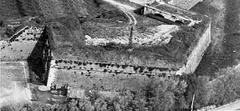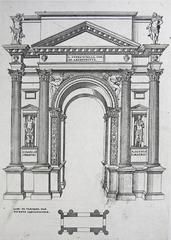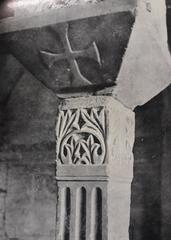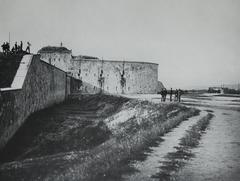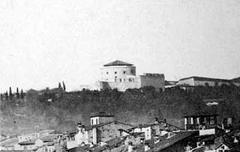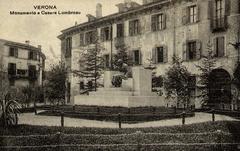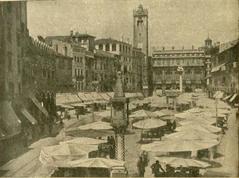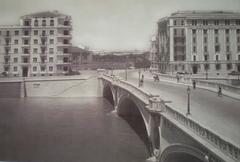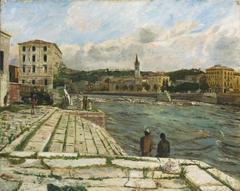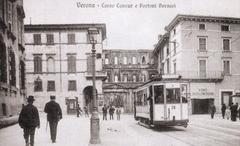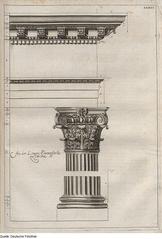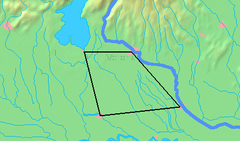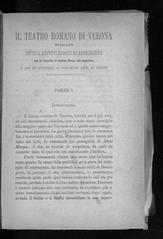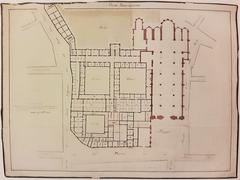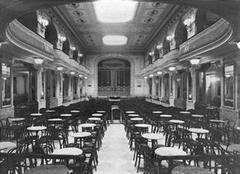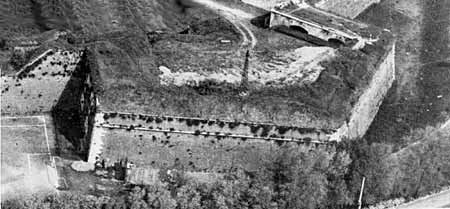
Complete Guide to Visiting Bastione delle Maddalene, Verona, Italy
Date: 01/08/2024
Introduction
The Bastione delle Maddalene in Verona, Italy, is a remarkable historical monument that offers visitors a profound glimpse into the city’s storied past. Nestled along Verona’s magistral walls, this bastion stands as a testament to the city’s strategic military importance and architectural ingenuity. The origins of the Bastione delle Maddalene date back to medieval times, with significant fortification efforts initiated by the Scaliger family and later enhanced during the Venetian and Austrian dominations. The bastion’s design, featuring innovative triangular and pentagonal layouts, reflects the evolving art of fortification that adapted to the advent of gunpowder weaponry. Today, the Bastione delle Maddalene is not just a relic of military history but a cultural landmark that embodies the resilience and heritage of Verona. For history enthusiasts and casual tourists alike, this guide provides comprehensive information on the bastion’s historical significance, visitor details, and practical tips to ensure a memorable visit. For more detailed historical background and visitor information, you can visit the Comune di Verona’s official page or the Wikipedia entry on Bastione delle Maddalene.
Table of Contents
- Introduction
- Historical Background
- Visitor Information
- Photographic Spots and Visuals
- FAQ
- Conclusion and Call to Action
Historical Background
Early Fortifications
The origins of the Bastione delle Maddalene can be traced back to the medieval fortifications of Verona. Initially, the city was protected by the Scaligera wall, commissioned by Alberto I della Scala and constructed between 1287 and 1289. This wall was part of a broader effort to fortify Verona, including the construction of the Cinta Muraria Turrita di Campo Marzo, extending from the left bank of the Adige River to Porta Vescovo (Comune di Verona).
Venetian Influence and Construction
In 1527, the Serenissima Repubblica di Venezia undertook significant fortification projects in Verona to adapt to the advent of gunpowder weaponry. The Bastione delle Maddalene was one of the first bastions constructed under this initiative. The project was overseen by Francesco Maria I della Rovere, Duke of Urbino and Governor General of the Venetian Militia, and executed by Pier Francesco da Viterbo (Wikipedia).
Architectural Innovations
Pier Francesco da Viterbo introduced innovative design elements in the construction of the Bastione delle Maddalene. Departing from the traditional circular or square bastion designs, he opted for a triangular and pentagonal layout. This design was more suited to the defensive needs of the time, providing better angles for artillery and reducing blind spots (Comune di Verona).
Austrian Modifications
During the Austrian domination of Verona, from 1815 to 1866, the Bastione delle Maddalene underwent further modifications. Under the direction of Feldmarschall Josef Radetzky and the guidance of Franz von Scholl, a prominent Austrian military architect, the bastion was adapted to meet new defensive requirements. The original open-air artillery positions were replaced with a second order of casemates, and a new poterna (a covered passage) was constructed, providing access to the lower casemates (Wikipedia).
Structural Details
The Bastione delle Maddalene is a robust structure composed of masonry and earth, featuring a pentagonal layout. The outer walls are made of brick and are sloped (a technique known as scarpa) up to a stone cordon, above which the walls continue vertically to support the earthen parapet. The base of the wall includes a countermine gallery with openings for light and ventilation (Wikipedia).
Military Significance
The Bastione delle Maddalene played a crucial role in the defense of Verona. Its strategic location along the city’s magistral walls made it a key point in the city’s fortifications. The bastion’s design allowed for effective use of artillery, and its robust construction provided significant protection against enemy attacks. The modifications made during the Austrian period further enhanced its defensive capabilities, making it a formidable part of Verona’s military infrastructure (Comune di Verona).
Cultural and Historical Impact
Beyond its military significance, the Bastione delle Maddalene is a testament to the evolving art of fortification and the historical shifts in Verona’s governance. From the medieval period under the Scala family to the Venetian and Austrian dominations, the bastion reflects the city’s rich and complex history. Today, it stands as a monument to these historical periods, offering visitors a glimpse into the past and the architectural ingenuity of its time (Wikipedia).
Visitor Information
Ticket Prices and Opening Hours
The Bastione delle Maddalene is maintained by the Comune di Verona and is accessible to the public. Visitors should check the official website of the Comune di Verona for the latest information on ticket prices, opening hours, and any special events or exhibitions (Comune di Verona).
Guided Tours and Special Events
Guided tours are highly recommended to gain deeper insights into the historical and architectural significance of the bastion. The site frequently hosts special events and exhibitions, providing unique opportunities to experience the bastion in different contexts. Check the official website or contact the Comune di Verona for more information.
Travel Tips and Nearby Attractions
For those planning to visit the Bastione delle Maddalene, here are some useful tips:
- Location: The bastion is located along the magistral walls of Verona, on the left bank of the Adige River.
- Access: The site is accessible via public transportation or by walking from the city center.
- Nearby Attractions: While in the area, consider visiting other historical sites in Verona, such as the Arena di Verona, Castelvecchio, and Juliet’s House. These sites are within walking distance and offer a comprehensive view of Verona’s rich history.
Photographic Spots and Visuals
The Bastione delle Maddalene offers excellent opportunities for photography, especially for those interested in historical architecture and scenic views of Verona. Be sure to capture the unique angles and robust structure of the bastion. High-quality images can enhance your visit and provide lasting memories of this historical site.
FAQ
What are the visiting hours for Bastione delle Maddalene? Visiting hours vary, so it is best to check the official website of the Comune di Verona for the most up-to-date information.
How much are tickets for Bastione delle Maddalene? Ticket prices can vary depending on the type of visit (e.g., general admission, guided tour). For the latest ticket prices, refer to the official website of the Comune di Verona.
Is the Bastione delle Maddalene accessible? The site is accessible via public transportation and walking. For specific accessibility information, including accommodations for visitors with disabilities, check with the Comune di Verona.
Conclusion and Call to Action
By understanding the historical background and significance of the Bastione delle Maddalene, visitors can fully appreciate this remarkable piece of Verona’s heritage. Plan your visit today and delve into the rich history that this bastion has to offer. Don’t forget to check out other related posts and follow us on social media for more updates and information on Verona’s historical sites.
References
- Comune di Verona. (n.d.). Bastione delle Maddalene. Retrieved from Comune di Verona
- Wikipedia contributors. (n.d.). Bastione delle Maddalene. In Wikipedia, The Free Encyclopedia. Retrieved from Wikipedia
- Verona Tourist Office. (n.d.). Bastione delle Maddalene. Retrieved from Verona Tourist Office
- Outdooractive. (n.d.). Bastione delle Maddalene. Retrieved from Outdooractive
